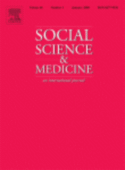Abstract: It is well documented that doctors rate diseases in a prestige hierarchy, in which some diseases are valued more than others. However, little is known about how doctors acquire the knowledge to do this rating. Based on a fieldwork study of the teaching of neurosurgery at a Norwegian university hospital, this paper shows how notions of disease prestige are (re)produced through neurosurgeons' telling of disease narratives in medical education. The analysis presents their prestigious narrative of subarachnoid haemorrhage (SAH), a rare form of stroke, which neurosurgeons presented as an acute and potentially lethal but curable disease. In contrast to perceivably more ordinary diseases, their portrayal of SAH references heroic narratives on a more abstract cultural level, casting neurosurgeons as masculine and extraordinary lifesavers, able to act where others fall short. By shedding light on how neurosurgeons teach students to evaluate diseases, the paper lays a foundation for reflecting upon the means and conditions that (re)produce their notions of disease prestige and contributes more generally to our understanding of medical culture.
The narrative (re)production of prestige: How neurosurgeons teach medical students to valorise diseases
Av Lars Emil Fagernes Johannessen, publisert i Social Science & Medicine (2014).

Published Oct. 8, 2014 1:18 PM
- Last modified Sep. 8, 2023 5:48 PM